5 Places to Source Data for Better Data-Driven Content

5 Places to Source Data for Better Data-Driven Content
The most powerful pieces of content are informed by data—not just a hunch.
In an internet full of content—plentiful fluff pieces, sources without citations, and simple regurgitations of existing content—original insights and unique data-driven content stand above the pack of search results. Being successful at content marketing’s getting tougher by the day, and content differentiation is a real challenge that companies are facing.
There is good news, though—each brand out there has data under the surface to mine—whether or not it’s readily accessible as-is. There is a multitude of sources to mine for data that is specific to your products or services (and some that you may not have thought could yield useful data!) to inform pieces that will resonate with your target audiences. We aim to illuminate a few that may have previously flown under the radar to get you thinking.
Table of Contents
- 1. Social media polls to read your audience’s pulse
- 2. Customer surveys for unique brand insights
- 3. Customers’ product or service usage data to surface pain points and case studies for content opportunities
- 4. Google and keyword searches to propel data-driven content marketing
- 5. Content metadata to determine engagement
- Parse.ly is the natural partner to create data-driven content (and measure it)
1. Social media polls to read your audience’s pulse
For gathering differentiated data insights quickly from an audience, social media polls are extraordinarily cost-efficient, relatively painless, and a powerful source that brands often overlook for data-mining opportunities.
This opportunity can be especially fruitful for a newer company whose data is harder to get or tricky to share, whether for compliance reasons or difficulty framing that data in a way that’s digestible to your audience. Below is an example of how even government entities can use a LinkedIn or social media poll to help them better serve the people:
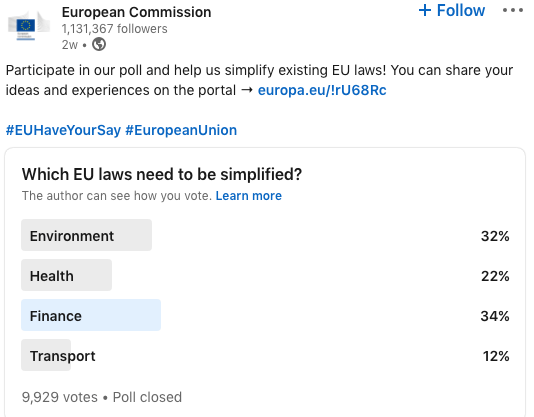
(Source: European Commission LinkedIn)
These polls could help your content team prioritize which topics are top of mind for your readership or serve as visualizations in upcoming pieces of content, such as infographics or webinars. A series of poll results could even form their own content.
The best social media channel on which to host these polls differs from company to company. E-commerce companies will likely turn to their Instagram following for a more robust B2C platform, while B2B might take to LinkedIn or Twitter to host a poll, where a greater pool of B2B companies and professionals hang out. Run concurrent polls across channels to see how buyer personas interact differently with your brand, and you might even disprove some hypotheses in the process! Don’t neglect polling Slack communities related to your industry, too, through apps like Simple Poll and Polly.
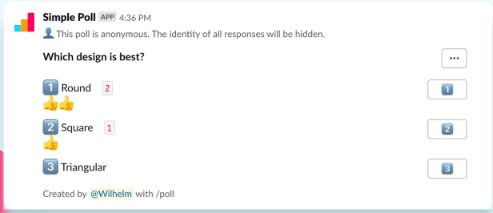
(Source: Slack)
2. Customer surveys for unique brand insights
Think about what unique insights your company has to share. Customer surveys and user-sourced data are powerful ways to illuminate what your product or service can share and spur countless, timely pieces of content.
Take, for example, Parse.ly. We host countless analytics dashboards to measure content effectiveness and trends for our customers (as well as for customers of our newest family member, WordPress VIP). At the beginning of 2021, our data analyst, Kelsey Arendt, combed the plentiful data surveys we collected throughout 2020, a year when our collective content consumption changed significantly.
Here at Parse.ly, we are privy to loads of specifics on our customers’ content. To list a few, this includes categorizations of content, engagement by a variety of measures, and other crucial metrics like bounce rate to take the pulse of how their content is performing. For the 2020 review, we sought to shed a uniquely insightful, comprehensive light on what the heck happened in the world of content. This visualization charting content categories and change year-over-year is one of many to bring this data-driven content piece to life:
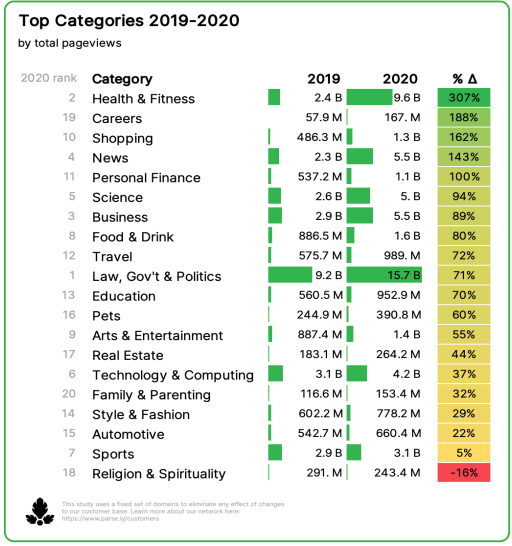
(Curious about the rest of the findings? Download the whole report to see what happened in 2020 and what that means for 2021 and your content strategy.)
Depending on your goals for content, you could also make a more brand-forward play with your data. ChartHop, a platform for building and updating organization charts, did this for April Fool’s Day, 2021. To create its “Charting Better Galaxies” report, ChartHop mined its data on pay grade, birthdays, and leadership positions, among others, to draw conclusions based on astrological signs. How else would we know that Libras are the lowest-paid sign overall?

(Source: ChartHop’s Charting Better Galaxies)
In the absence of easily parseable or accessible data, though, you can conduct customer surveys through SurveyMonkey, Google Forms, or Typeform to collect insights to inform content to bring value to your audience.
3. Customers’ product or service usage data to surface pain points and case studies for content opportunities
If you’re sensing a theme, you’re not wrong: Customers’ use of your own products or services can yield countless data-driven content opportunities to directly benefit them. For example, data can illuminate when use drops off for a feature or service, which you can then use to inform content specifically to alleviate their pain points.
In addressing pain points and objections head-on, powered by content, you can keep customers moving down the funnel for additional upsell opportunities or encourage different uses of features than they’d thought. These reactive pieces of content can include customer training materials like panels or webinars of customers, how-to-get-started videos, or helpful tips in the form of blog or support center content to be used in email drip campaigns, social media campaigns, or as sales follow-up.
For example, Notion runs customer surveys frequently for existing customers and prospects alike to inform their content efforts. Their extraordinary product tracks projects, shares docs, and provides infinite flexibility. But they’ve learned that one of their users’ main challenges is simply knowing how to get started with such endlessly customizable software.
To solve for this overwhelming customer pain point, they have dedicated a whole prong of their content strategy to publishing customer stories that showcase different ways to use Notion, in addition to sharing ample screenshots and GIFs of their setups to help inspire customers to get their hands dirty:
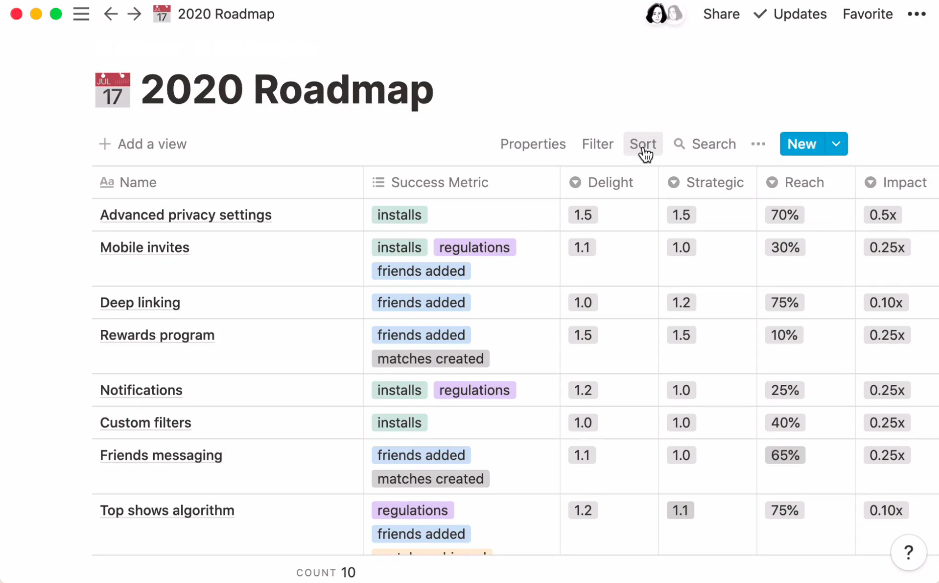
(Source: Notion/Match Customer Story)
Additionally, highlighting what customers have achieved using your product or service is potentially the most powerful tool for marketing your company at the bottom of the funnel. This can take on the form of case studies or testimonials. Beyond your product or service, interview customers to understand how your product or service has transformed how they operate and do business—and make sure as many of their quotes as possible are backed by hard numbers. Numbers make it real.
CallRail, a marketing platform that allows businesses to communicate with leads and customers and track all their activities, publishes case studies about a variety of its products. Reporting cost savings, changes in response times, and the growth CallRail allowed its spotlighted customers are real deal closers when it comes to bottom-of-funnel content.
This case study is about an asphalt company that used CallRail’s Lead Center product to streamline its workflow, ultimately helping to double sales and save hundreds of dollars per month:
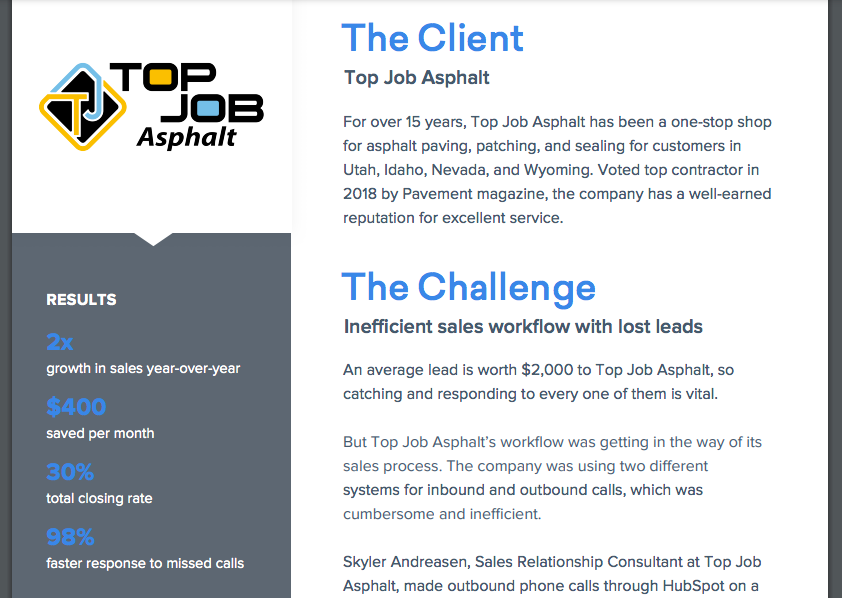
(Source: CallRail/Top Job Asphalt Case Study)
4. Google and keyword searches to propel data-driven content marketing
Check out the main way that prospects and customers connect with your brand on search engines—what keywords are they searching for most often?
To do this research, you can take to Google itself, searching for keywords related to your business, paying particular attention to the “people also ask” and “related searches” sections to answer more of their pressing questions through your content. For example, a preliminary search for the broad search term “insomnia” turns up some interesting insights of new ways to write about this popular topic:
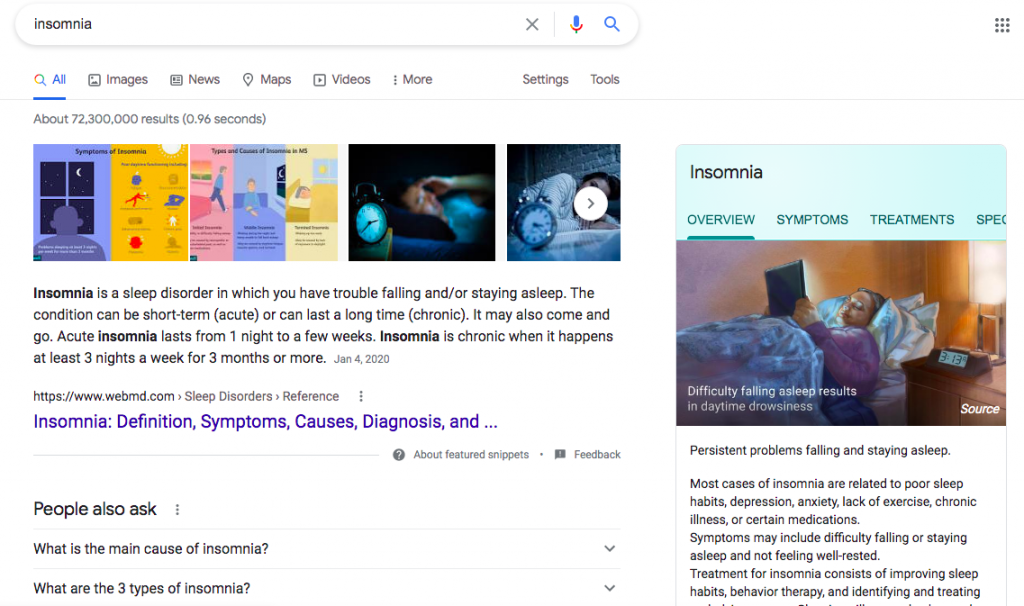

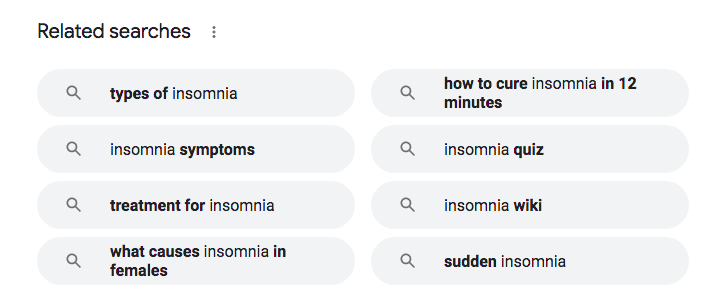
Backed by Google’s data-driven algorithm, it’s evident that the searchers need more content for the “types of insomnia” because it shows up in “people also ask” and “related searches.” Even a few cursory searches open up new venues for research to ultimately create a more comprehensive piece of content, delivering on more related topics than just “insomnia” to an eager audience looking to solve a problem.
Further, you can get more ideas for what keywords are tracking well for search in Parse.ly’s “search” category of the Top Referrers by Page Views (#2 in the screenshot below) to see what content does really well on search, especially compared to other types of traffic like internal, social, direct, etc.:
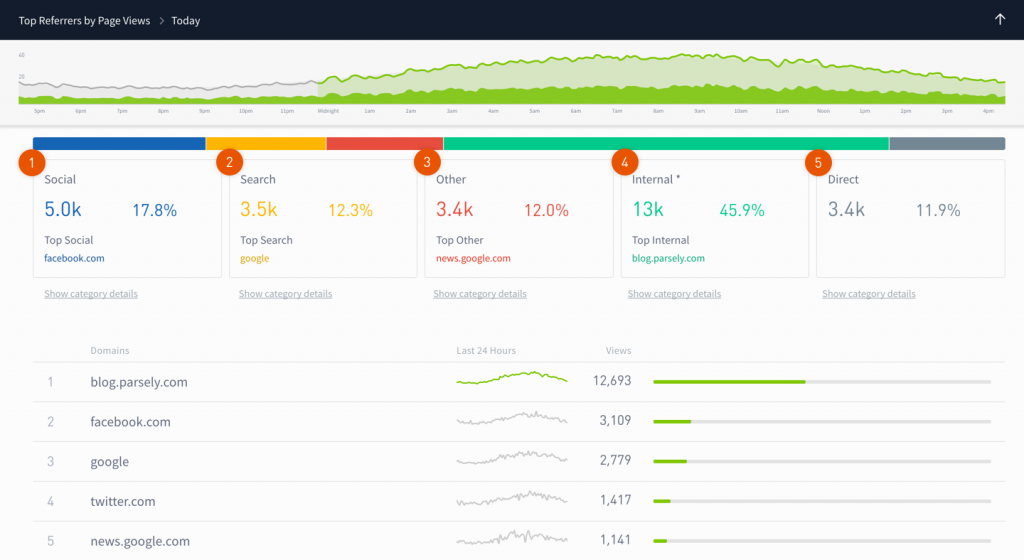
5. Content metadata to determine engagement
Not only can data inform the meat of data-driven content itself, but it can also crucially inform the steps that precede writing—like what types of content are even created in the first place. Further, applying data insights surfaced by data analytics platforms like Parse.ly on other components of content success, like which titles, marketing channels, and authors consistently perform strongly, allow your organization to keep iterating on what’s working in your content (and ditching what’s not).
Tracking which content is pulling in big traffic numbers isn’t sufficient. Think about extracting specific data points to point out directionally why pieces are successful—what elements do they have in common? For example, you might look at the authors of content that garner longer engaged-time, titles that drive more visits from social media, or marketing channels or aggregators that drive more clicks to determine which types of content perform best.
Parse.ly’s analytics platform, built for content analytics from the beginning, allows for deep sorting of content by various dimensions, such as authors:
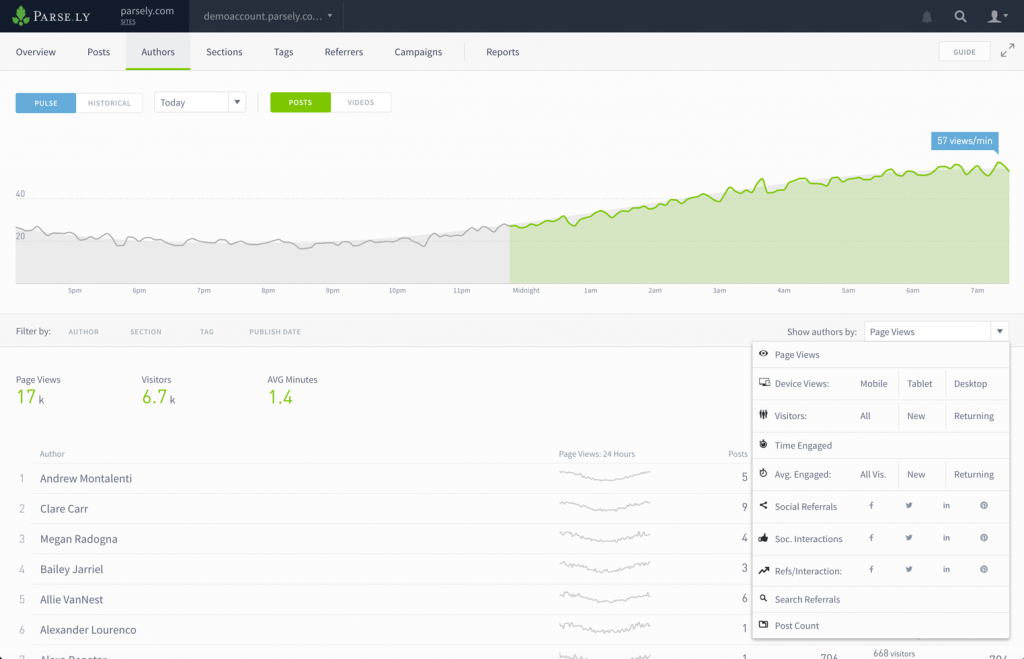
By identifying trends and staying on top of these dimensions in an ongoing fashion, you can iterate on successes and know with certainty what is working in your content.
Parse.ly is the natural partner to create data-driven content (and measure it)
All insights that can be gleaned from Parse.ly allow you and your organization to keep a 10,000-foot view of your content—both what you write about and what to do with those insights based on past content’s performance.
As the only analytics platform on the market that was originally built to measure content and make those data points actionable (and not just drown you in numbers), Parse.ly is uniquely suited to help bring your stories to life. Interested in seeing how Parse.ly can help you flex your data-driven content marketing muscles like never before? Get a demo from our knowledgeable team of data nerds and explore for yourself.